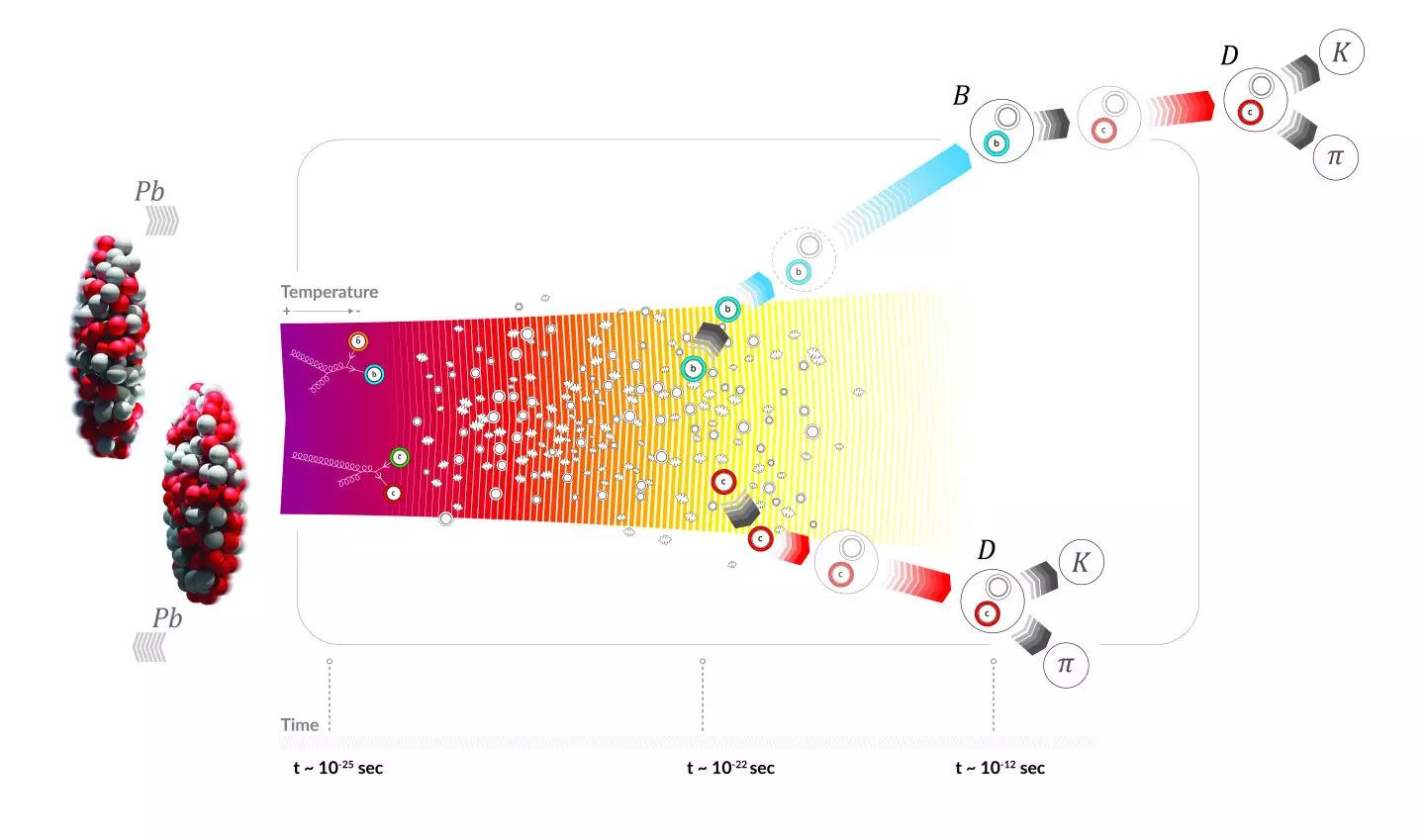The study of the fundamental building blocks of matter has always fascinated scientists. In their pursuit of understanding the universe, researchers have pushed the boundaries of knowledge by examining extreme states of matter. One such intriguing state is the quark-gluon plasma, a fireball of particles that existed in the first few millionths of a second after the Big Bang. To explore this exotic realm, scientists at the Large Hadron Collider (LHC) conduct high-energy collisions between lead ions. These collisions create an environment where quarks and gluons are no longer confined within composite particles called hadrons.
In a recent breakthrough, the ALICE collaboration shed new light on the behavior of heavy quarks, specifically charm and beauty quarks, within the quark-gluon plasma. Unlike lighter quarks and gluons, which are produced inside the plasma, heavy quarks are formed in the initial stages of the collisions, before the plasma emerges. Consequently, they interact with the plasma throughout its entire evolution. By studying the elliptic flow of hadrons containing heavy quarks, scientists gain valuable insights into the properties of the quark-gluon plasma.
Thermalization plays a crucial role in the evolution of heavy quarks within the plasma. As heavy quarks interact with the plasma’s constituents, they gradually reach thermal equilibrium with the medium. Charm quarks, being lighter than beauty quarks, attain thermal equilibrium relatively quickly. Conversely, beauty quarks require a longer thermalization time. Once thermalized, charm quarks form D mesons, while beauty quarks combine with light quarks to form B mesons.
To measure the elliptic flow of B mesons, the ALICE collaboration employed a novel machine-learning technique. This technique enabled them to separate the products of the decay of non-prompt D mesons from the prompt ones. It also helped suppress background particle processes that mimic D meson production and decay. This groundbreaking analysis revealed that the elliptic flow of non-prompt D mesons is weaker than that of their prompt counterparts, consistent with theoretical expectations.
The findings of the ALICE collaboration lay the foundation for further investigations into the thermalization of beauty quarks. With the upcoming Run 3 of the LHC, scientists are poised to conduct experiments with 40 times more lead-lead collisions than in previous periods of heavy-ion data taking. This expanded dataset holds tremendous potential for studying the flow of charm and beauty particles with unprecedented detail. Through these future measurements, researchers aim to unravel the intricacies of the quark-gluon plasma and enhance our understanding of the dynamics of heavy quarks within it.
The exploration of quark-gluon plasma continues to captivate the scientific community. The recent measurement of the elliptic flow of heavy quarks by the ALICE collaboration represents a remarkable milestone in our comprehension of this fascinating state of matter. By analyzing the behavior of charm and beauty quarks, researchers have deepened our understanding of thermalization within the quark-gluon plasma. With state-of-the-art techniques and upcoming experiments, scientists are poised to unlock even more secrets about the fundamental constituents of the universe. Through their tireless efforts, they illuminate the path towards unraveling the mysteries of the early universe and advancing our knowledge of the cosmos.


Leave a Reply